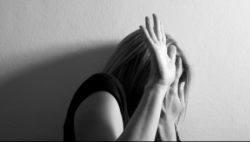Social Anxiety Disorder Symptoms
While most, if not all people harbor some type of fear in one form or another, these fears don’t necessarily affect their ability to function in everyday life. This is not the case for someone with social anxiety disorder. Also known as social phobia, social anxiety disorder symptoms can cause a person considerable distress within the most casual of circumstances. By gaining a better understanding of what’s going on, a person can begin to take steps towards coping with social anxiety disorder symptoms.
Social Anxiety Disorder
Social anxiety disorder symptoms can affect people in different ways and vary in intensity from setting to setting. One person may experience anxiety in all social situations while another may only feel anxiety in particular social settings. A key characteristic of this disorder is the lack of control people have over their fear, even when they know there’s no rational basis for it. At the root of social anxiety disorder symptoms lies a fear of being judged by other and/or embarrassed in front of others.
Someone affected by social anxiety disorder symptoms may worry continuously about events and settings days and even weeks before they actually happen. Common activities, such as eating with a group of people, being around large crowds or signing a check at the checkout counter in a store can fill a person with overwhelming dread.
Symptoms

Social anxiety disorder can cause you to have the fear of being judged by other people.
In most cases, social anxiety disorder symptoms start early on during a person’s childhood or teenage years. Symptoms must exist for a minimum of six months before a diagnosis of social anxiety disorder can be made.
While social anxiety disorder symptoms can vary from person to person, the National Institute of Mental Health lists the most commonly known symptoms as:
- Feeling self-conscious in front of others
- Feeling embarrassed in front of others
- Experiencing physical discomfort, such as nausea, tightness in the chest or shortness of breath around other people
- Trembling, sweating or blushing around others
- Difficulty making friends and maintaining friendships
- Fear of doing something embarrassing or humiliating
- Avoiding being noticed by others, hiding
- Using drugs or alcohol to cope with social situations
- Fear of running errands
- Fear of using public restrooms
Thinking Patterns
Social anxiety disorder symptoms often cause a person to avoid distressing situations whenever possible. While a temporary solution, avoidance as a coping mechanism only makes the problem worse. More oftentimes than not, a person’s thinking patterns do much of the work in creating feelings of fear and anxiety.
Thinking patterns can take on different forms that feed social anxiety in different ways. Some of the more common patterns include:
- Personalizing – assuming you’re the focus of attention and others view you in a negative light
- Mind reading – assuming others see you in a negative way, or in the same way you see yourself
- Catastrophizing – thoughts of being seen as “nervous” and assuming others will think the worst of you
- Fortune telling – exaggerated thoughts and expectations that everything will go wrong, assuming the worst possible scenario will happen
In effect, social anxiety disorder symptoms thrive on negative thinking patterns.
Resources:
National Institute of Mental Health





